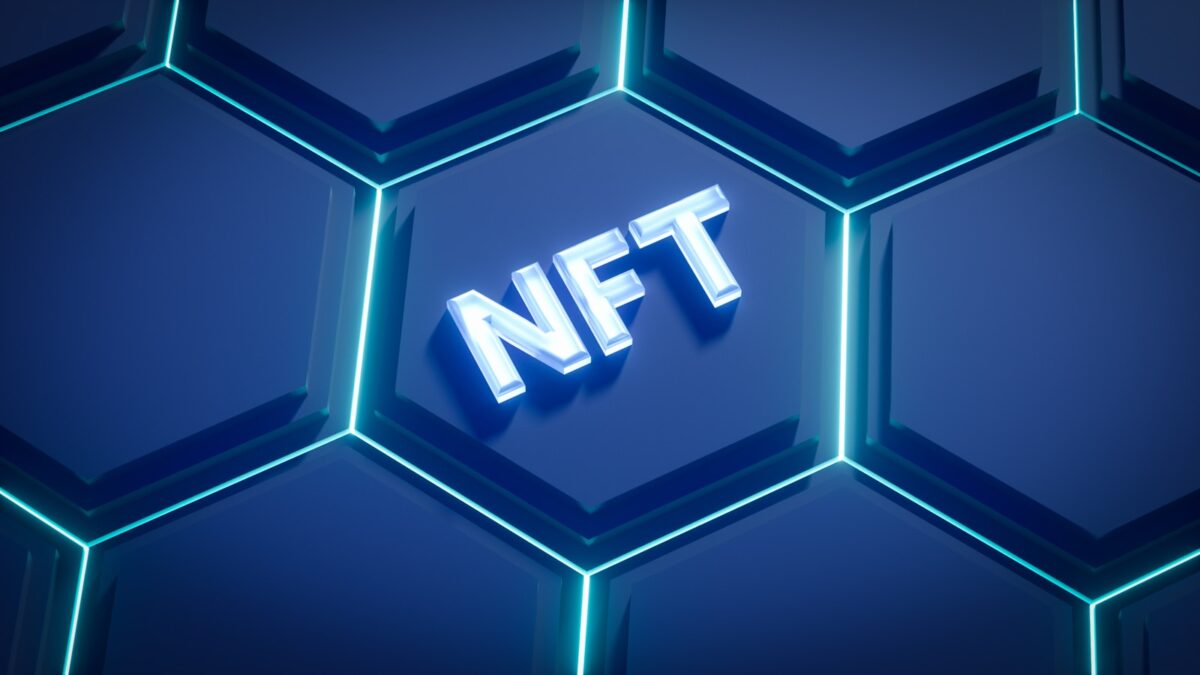
Atomic swaps explained

Enabling direct token exchange between distinct blockchain networks requires precise coordination to prevent loss or fraud. The solution lies in utilizing cryptographic protocols that enforce simultaneous transfers, ensuring neither party can default without consequences. These mechanisms rely on smart contracts programmed to execute conditional trades atomically, preserving transactional integrity across chains.
Cross-chain interoperability expands possibilities by allowing assets locked on one ledger to be swapped securely for tokens on another without intermediaries. This trustless design eliminates reliance on centralized exchanges, reducing counterparty risks and enhancing privacy. By coordinating contract states through hash time-locked agreements, participants guarantee that either both sides complete the transaction or none do.
Exploring these coordinated exchange protocols reveals a practical pathway toward seamless asset portability and decentralized finance integration. Experimentation with smart contract deployment and timed lock parameters provides insights into optimizing execution speed and minimizing costs while maintaining security standards. Such hands-on investigation builds confidence in adopting cross-ledger communication frameworks for decentralized applications.
Understanding Cross-Chain Token Exchanges Without Intermediaries
Interoperability between distinct blockchain networks can be achieved through direct token exchanges that eliminate the need for centralized intermediaries. These mechanisms rely on cryptographic protocols ensuring trustless transactions, where parties can trade assets across chains without exposing themselves to counterparty risk. By leveraging smart contracts, users initiate a process that guarantees either simultaneous completion of asset transfer or a full rollback, preserving funds integrity.
Such protocols facilitate cross-chain trading by establishing conditional agreements embedded in programmable contracts. The execution depends on predefined criteria, typically involving hash time-locked contracts (HTLCs), which secure the process by requiring both parties to reveal secret information within certain timeframes. Failure to meet these conditions automatically reverses the transaction, thereby maintaining atomicity and preventing partial executions.
Mechanics of Trustless Cross-Network Asset Exchange
The core principle underpinning these contract-based exchanges is the elimination of trust in counterparties. Unlike traditional methods relying on escrow services or third-party custodians, these protocols enforce terms through code logic. Upon initiation, each participant locks their tokens in a smart contract on their respective blockchain. The exchange finalizes only when both sides fulfill the stipulated conditions simultaneously.
This method enhances interoperability by allowing disparate blockchains–such as Bitcoin and Ethereum–to interact without native compatibility layers. Users retain full control over private keys throughout the process, mitigating risks associated with centralized platforms. For example, decentralized protocols like Lightning Network integrations and specialized cross-chain frameworks have demonstrated practical applications enabling seamless digital asset transfers.
- Hash Time-Locked Contracts: Ensure that revealing a secret unlocks corresponding funds on both chains within a deadline.
- Smart Contract Automation: Enforce compliance with trade terms autonomously without manual intervention.
- Direct Peer-to-Peer Trading: Eliminates intermediary fees and reduces settlement latency compared to exchange-based models.
Experimental studies show that implementing such protocols requires meticulous synchronization between network states and robust handling of possible delays or failures. Developers must also consider differences in scripting capabilities across chains to guarantee compatibility. Ongoing research focuses on expanding this approach beyond cryptocurrencies towards tokenized assets and decentralized finance instruments.
The pursuit of seamless interoperability through these mechanisms invites continued experimentation with advanced smart contract designs and protocol enhancements. Understanding how different blockchains implement time-locking functions or hashing algorithms informs more resilient architectures able to scale securely while maintaining user autonomy during cross-network trading operations.
This ongoing exploration encourages critical inquiry into improving transaction throughput and reducing confirmation times inherent in multi-chain coordination schemes. Researchers can investigate hybrid approaches combining off-chain channels with automated contract enforcement for optimized performance without compromising decentralization principles foundational to blockchain technology.
How Cross-Chain Trustless Trading Operates
Trustless direct exchanges between different blockchain networks are achieved through a mechanism that ensures simultaneous and conditional execution of asset transfers. This process eliminates reliance on intermediaries by using cryptographic protocols embedded within smart contracts, which enforce the terms of the transaction across independent ledgers. The key to this interoperability lies in synchronizing contract states so that one party cannot defraud the other.
The protocol relies on hash time-locked contracts (HTLCs), which create conditional agreements requiring both parties to reveal secret data within specified timeframes. When one participant initiates the exchange, a cryptographic hash representing a secret value is shared, locking funds on their blockchain. The counterparty must use the corresponding preimage to claim these assets, simultaneously revealing the secret required for redeeming their own locked tokens on another chain. This guarantees atomicity–the indivisible nature of the trade–ensuring either full completion or complete rollback without loss.
Mechanics Behind Seamless Interoperability
Each participant deploys smart contracts tailored for cross-chain interaction, configured to recognize identical cryptographic hashes and enforce deadlines independently. For instance, in an Ethereum-to-Bitcoin transfer, Ethereum’s smart contract locks ERC-20 tokens while Bitcoin’s script locks BTC using analogous hashlocks and timelocks. These contracts operate autonomously yet correspond precisely through shared secrets, enabling direct peer-to-peer exchanges without centralized custody.
The dual-contract arrangement requires careful synchronization: if one party fails to redeem funds within a predetermined timeout period, each contract automatically refunds its respective owner. This temporal safeguard prevents indefinite fund lockup and incentivizes prompt action from both sides. Empirical studies demonstrate that such mechanisms dramatically reduce counterparty risk compared to traditional escrow services or centralized exchanges.
- Step 1: Initiator generates a random secret and hashes it.
- Step 2: Funds are locked in the initiator’s blockchain using HTLC with the hash.
- Step 3: Counterparty locks equivalent value on their chain under matching HTLC conditions.
- Step 4: Initiator redeems counterparty’s locked funds by revealing the secret.
- Step 5: Counterparty uses revealed secret to unlock initiator’s funds.
This sequence enforces strict atomicity by preventing partial completion scenarios, thereby enhancing security and trustlessness in cross-ledger trading environments.
The application of such technology extends beyond mere token exchange; it facilitates decentralized liquidity provision and paves the way for integrated financial ecosystems connecting previously isolated blockchains. By enabling interoperable smart contracts to execute coordinated state changes, diverse networks can communicate transactional intents reliably without compromising autonomy or security constraints inherent to each protocol.
The modular design of these protocols encourages experimental implementation across emerging blockchains, allowing developers to test novel consensus rules alongside established interoperability standards. Such exploration informs optimization strategies aimed at minimizing latency and transaction fees while maintaining robust atomic guarantees–a critical balance for practical deployment at scale.
Setting Up Cross-Chain Trades
To execute direct trades across distinct blockchain networks, implementing trustless smart contracts that guarantee conditional execution is fundamental. These contracts enable interoperability by enforcing that asset exchanges occur only if all parties fulfill predefined criteria, eliminating counterparty risk. For instance, utilizing hashed time-locked contracts (HTLCs) ensures that transactions either complete simultaneously or revert without loss, maintaining transactional integrity throughout the process.
Configuring these contracts requires precise coordination of cryptographic proofs and timing parameters to synchronize states across chains with differing consensus mechanisms. Practical deployments involve deploying compatible scripts on both blockchains to monitor and verify transaction fulfillment in real-time. This mechanism safeguards against partial execution scenarios common in cross-protocol exchanges by maintaining atomicity during the entire trade lifecycle.
Interoperability challenges arise when disparate blockchain architectures lack native support for cross-chain communication. Adopting middleware solutions such as relayers or decentralized oracles enhances connectivity by facilitating secure message passing between ledgers. Experimental frameworks like Polkadot’s parachains or Cosmos’ IBC protocol demonstrate scalable models where smart contract logic integrates seamlessly to orchestrate complex multi-chain asset transfers without centralized intermediaries.
Trading efficiency further improves through layered protocols that abstract complexity, allowing users to initiate cross-network trades via intuitive interfaces while underlying smart contract systems handle validation and settlement automatically. Case studies on platforms like Komodo showcase how direct peer-to-peer exchange mechanisms reduce friction compared to traditional centralized exchanges by preserving user custody and enabling instantaneous clearing across heterogeneous blockchain environments.
Common atomic swap challenges
Direct peer-to-peer exchange mechanisms between different blockchain networks face significant hurdles related to compatibility and protocol differences. Cross-chain trades require both parties to utilize specific cryptographic primitives, such as hash time-locked contracts (HTLCs), which are not universally supported across all blockchains. This limitation restricts the range of assets that can be directly exchanged without intermediaries, forcing users to rely on centralized exchanges or wrapped tokens in many cases.
The trustless nature of these contract-based exchanges demands precise synchronization in transaction execution. Delays or failures in broadcasting transactions within pre-defined timeframes can lead to funds being locked indefinitely or lost due to failed contract conditions. For instance, if one participant does not redeem their part of the trade before the timeout, the other must initiate a refund process, which complicates automation and user experience in decentralized trading environments.
Technical interoperability and protocol support
Cross-chain compatibility depends heavily on smart contract capabilities embedded in both participating networks. Blockchains like Ethereum support complex scripting via smart contracts, enabling sophisticated escrow and conditional payment schemes. Conversely, simpler chains with limited scripting languages cannot implement equivalent trustless exchange contracts directly. This discrepancy narrows the scope of feasible direct swaps and necessitates either protocol upgrades or auxiliary layers such as sidechains or relays.
- Example: Bitcoin’s limited scripting language only supports basic HTLC functionality, constraining its ability to interact with more complex contract-enabled chains without additional infrastructure.
- Case study: The Lightning Network uses off-chain channels to facilitate near-instant cross-chain payments but requires compatible protocols on both ends, illustrating how partial solutions address but do not fully eliminate interoperability issues.
Security vulnerabilities also challenge trustless contract execution during cross-network transactions. Since each blockchain operates independently, any weaknesses exploited on one chain could disrupt the entire exchange process. For example, reorganization attacks or delayed confirmations on one network may cause discrepancies in transaction states between parties, resulting in failed settlements or potential double spends.
- Challenge: Ensuring atomicity–where either both transfers occur successfully or none at all–is complex across asynchronous distributed ledgers.
- Mitigation: Implementing robust timeout parameters and multi-signature safeguards within the smart contracts reduces risk but increases complexity for users unfamiliar with advanced cryptographic constructs.
User experience remains a critical barrier for widespread adoption of direct cross-chain trading solutions based on trustless contracts. Navigating wallet configurations, managing private keys securely for multiple blockchains simultaneously, and understanding transaction timeouts require advanced technical knowledge. Without intuitive interfaces that abstract these complexities, many potential users prefer conventional centralized exchanges despite inherent counterparty risks.
The pursuit of truly decentralized and permissionless asset exchanges continues to expose fundamental constraints rooted in blockchain design diversity. Experimentation with hybrid models combining off-chain order books and on-chain settlement aims to balance security with practicality. Researchers must investigate how evolving consensus algorithms and interoperability standards influence future iterations of direct token exchange frameworks that preserve trustlessness without sacrificing accessibility or reliability.
Conclusion: Tools Enhancing Trustless Cross-Chain Trading
Implementing direct exchange mechanisms through hash time-locked contracts (HTLCs) remains the most effective approach to achieving trustless interoperability between heterogeneous blockchains. These protocols eliminate intermediaries by enabling conditional asset transfers, ensuring that either both sides complete the transfer or none do, preserving transactional atomicity.
The evolution of tooling around these processes is pivotal for expanding cross-chain liquidity and seamless interoperability. Platforms leveraging programmable scripts facilitate complex contract interactions that extend beyond simple token exchanges, allowing composability within decentralized finance ecosystems. For example, integrating multi-signature schemes alongside time locks enhances security and flexibility in peer-to-peer trading scenarios.
Key Technical Insights and Future Directions
- Cross-protocol compatibility: Advancements in standardized messaging layers promise to broaden support across diverse blockchain architectures, promoting wider adoption of direct asset exchanges without centralized order books.
- Contract extensibility: Modular contract frameworks enable customizable conditions embedded within swaps, allowing incorporation of dispute resolution logic or dynamic fee structures tailored to market demands.
- Layer 2 solutions integration: Scaling mechanisms like state channels and rollups can reduce latency and transaction costs associated with interchain trades while maintaining cryptographic guarantees underpinning trustlessness.
Experimental deployments show that these innovations are not merely theoretical but practical steps toward a more interconnected ecosystem where users retain control over assets throughout the exchange process. Continuous research into protocol optimizations and UX improvements will accelerate adoption by reducing friction commonly encountered in manual cross-chain operations.
This trajectory suggests a future where decentralized trading infrastructures operate seamlessly at scale–bridging isolated networks into a coherent environment supporting multifaceted financial instruments governed by enforceable smart contracts. Encouraging exploration of emerging frameworks offers valuable insights into how these tools can be refined, extended, and combined with privacy enhancements or regulatory compliance modules without compromising fundamental principles of trustlessness and directness.


